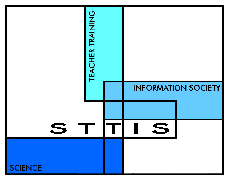Workshop 1
 Contents Contents
|
Section
D Transformations: beliefs about learning
Activity
D1 Computer modelling and learning |
|
Aims
-
To consider ways in which
the use of computer modelling
may be transformed by teachers.
-
To explore factors related
to beliefs about learning
that may influence the transformations.
-
To consider these issues
in the light of your own
teaching experience.
Background
In the research, teachers
often expressed strong
views about how pupils can be supported in their learning. This is not
surprising, since, pupil learning is after all their major concern, and
they have built up a great deal of expertise in this area. Beliefs
about
how pupils learn clearly influence how innovations are taken up. What
are
pupils learning when they use a simulation? Are the technical skills
required
to use a simulation or create a model to be seen as a hurdle or a
benefit?
How is motivation affected and what is the relationship with learning?
Do pupils learn more from running a model or from creating their own?
The
following stories address these questions.
[N.B. These stories are based
on research into the work of teachers implementing the use of computer
modelling. Though they are not based on particular individuals, they do
focus on issues that were identified in the research.]
What to do
1. It is best to do
this activity in a group
of two or three. Before you start discussion, however, work
individually
and read through each of the stories on page
2.
For each story, decide whether you are:
-
broadly sympathetic to the
position outlined in the
story (S)
-
broadly unsympathetic to
the position outlined in
the story (U)
-
neither (N)
Write the appropriate letter
next to each story.
2. Discuss
each story in turn within the
group. It may be useful to think about the following:
-
What is the key idea of
the story?
-
Are there points that the
teacher makes that we all
agree with?
-
Are there points that the
teacher makes that we all
disagree with? If so, is this because we disagree in principle or
because
we think the teacher has said something factually incorrect? Or because
they say something which may apply in their own situation but not in
yours?
-
What are the issues where
we do not reach a consensus?
What are the reasons for this?
3. After discussion,
work individually again
and look back over all of the stories. Pick out a few key sentences,
which
you agree with and think address the most important ideas for you.
Underline
them. Pick out a few sentences that you disagree with strongly.
Underline
them in a different colour or style. (Make a note of what the
colours/styles
mean so that you can work it out later.) You will be returning to these
sheets in a later session. |

 Teaching with computer models
Teaching with computer models

